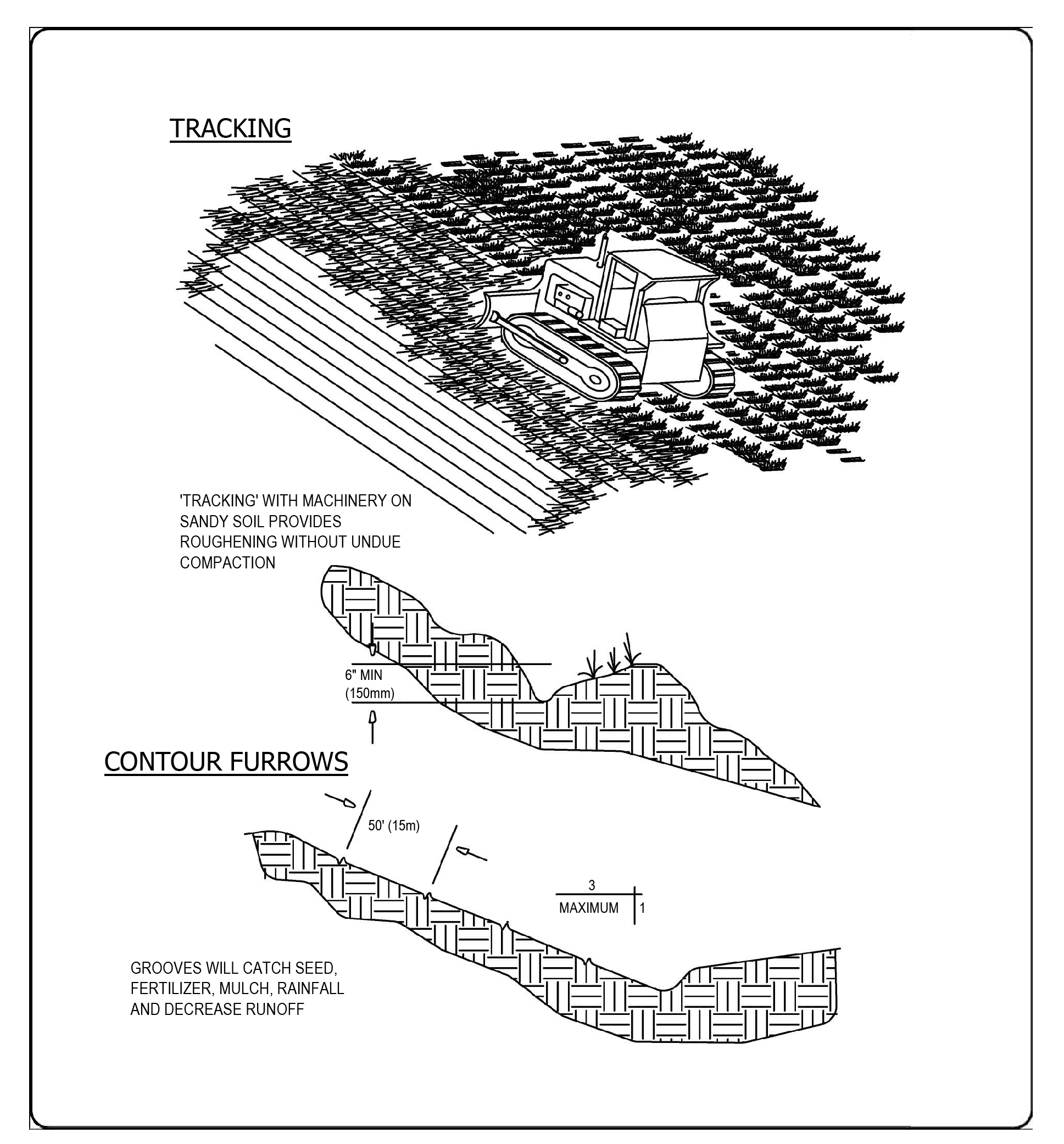1.15 BMP C130 - Surface Roughening
Surface roughening aids in the establishment of vegetative cover, reduces runoff velocity, increases infiltration, and provides for sediment trapping through the provision of a rough soil surface. Horizontal depressions are created by operating a tiller or other suitable equipment on the contour or by leaving slopes in a roughened condition by not fine grading them.
All slopes steeper than 3H:1V and greater than 5 vertical feet require surface roughening.
Areas with grades steeper than 3H:1V should be roughened to a depth of 2 to 4 inches prior to seeding.
Areas that will not be stabilized immediately may be roughened to reduce runoff velocity until seeding takes place.
Slopes with a stable rock face do not require roughening.
Slopes where mowing is planned should not be excessively roughened.
1.15.3 Design and Installation Specifications
There are different methods for achieving a roughened soil surface on a slope, and the selection of an appropriate method depends upon the type of slope. Roughening methods include stair-step grading, grooving, contour furrows, and tracking. See Figure 3 - 5: Surface Roughening by Tracking and Contour Furrows for tracking and contour furrows. Factors to be considered in choosing a method are slope steepness, mowing requirements, and whether the slope is formed by cutting or filling.
Disturbed areas that will not require mowing may be stair-step graded, grooved, or left rough after filling.
Stair-step grading is particularly appropriate in soils containing large amounts of soft rock. Each "step" catches material that sloughs from above, and provides a level site where vegetation can become established. Stairs should be wide enough to work with standard earth moving equipment. Stair steps must be on contour or gullies will form on the slope.
Areas that will be mowed (these areas should have slopes less steep than 3:1) may have small furrows left by disking, harrowing, raking, or seed-planting machinery operated on the contour.
Graded areas with slopes greater than 3:1 but less than 2:1 should be roughened before seeding. This can be accomplished in a variety of ways, including "track walking," or driving a crawler tractor up and down the slope, leaving a pattern of cleat imprints parallel to slope contours.
Tracking is done by operating equipment up and down the slope to leave horizontal depressions in the soil.
Areas that are graded in this manner should be seeded as quickly as possible.
Regular inspections should be made of the area. If rills appear, they should be re-graded and re-seeded immediately.
Figure 3 - 5: Surface Roughening by Tracking and Contour Furrows
